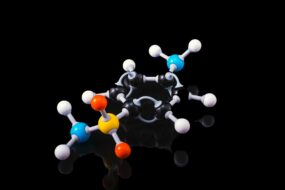Ondansetron is an antiemetic drug developed to control cancer chemotherapy/radiotherapy-induced vomiting.
It was later found to be highly effective in postoperative nausea and vomiting and disease/drug-associated vomiting.
It is eliminated in urine and feces, mostly as metabolites with a t½ of 3–5 hrs and a duration of action of 8–12 hrs.
It is a 5-HT3 antagonist.
Mechanism of action.
· It binds to 5-HT3 receptors in the periphery(mostly GIT) and the CNS.
· This causes blocking of vomiting induced by serotonin release.
· It does not affect dopamine receptors and therefore does not cause extrapyramidal symptoms.
· Apomorphine or motion sickness-induced vomiting is not suppressed.
Clinical uses.
- Cancer chemotherapy/radiotherapy-induced vomiting.
- Postoperative nausea and vomiting and disease-associated vomiting.
- To prevent delayed emesis.
- Vomiting occurs as a side effect of drugs or due to drug overdose, g.i.t disorders, uremia, and neurological injuries.
Adverse effects.
- Headache and dizziness.
- Mild constipation and abdominal discomfort.
- Hypotension, bradycardia, chest pain, and allergic reactions.
- A transient rise in liver enzymes.
- Urinary retention and flushing.
Contraindication.
- Hypersensitivity to ondansetron and related drugs.
- Precaution in severe hepatic impairment and controlled hypertension.
Dosage.
- 8 mg i.v. by slow injection over 15 min ½ hr before chemotherapeutic infusion, followed by two similar doses 4 hours apart.
- Single 24 mg i.v. dose on the first day.
- To prevent delayed emesis, 8 mg oral is given twice daily for 3–5 days.
- For PONV 4–8 mg i.v. given before induction is repeated for eight hours.
- ESET, VOMIZ, OSETRON, EMSETRON 4,8 mg tablets 2 mg/ml injection in 2 ml and 4 ml amps.
- ONDY, EMESET 2 mg/5 ml syrup.












